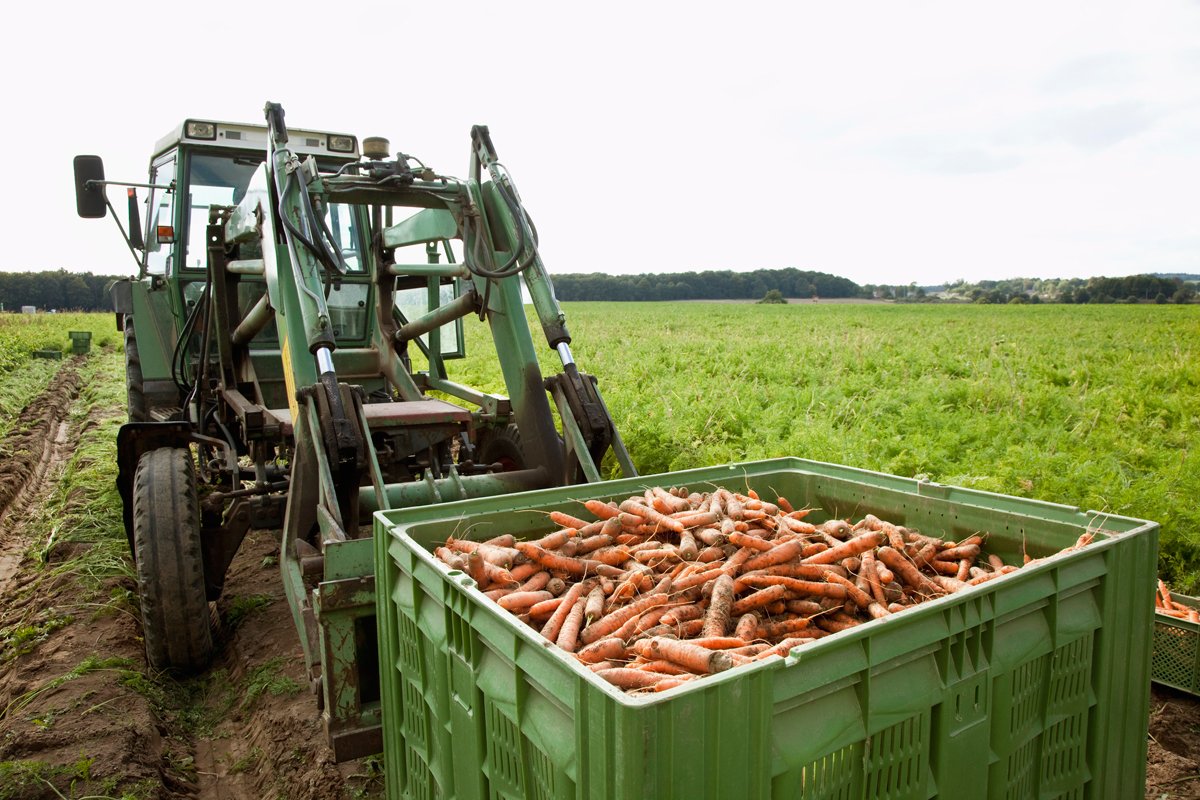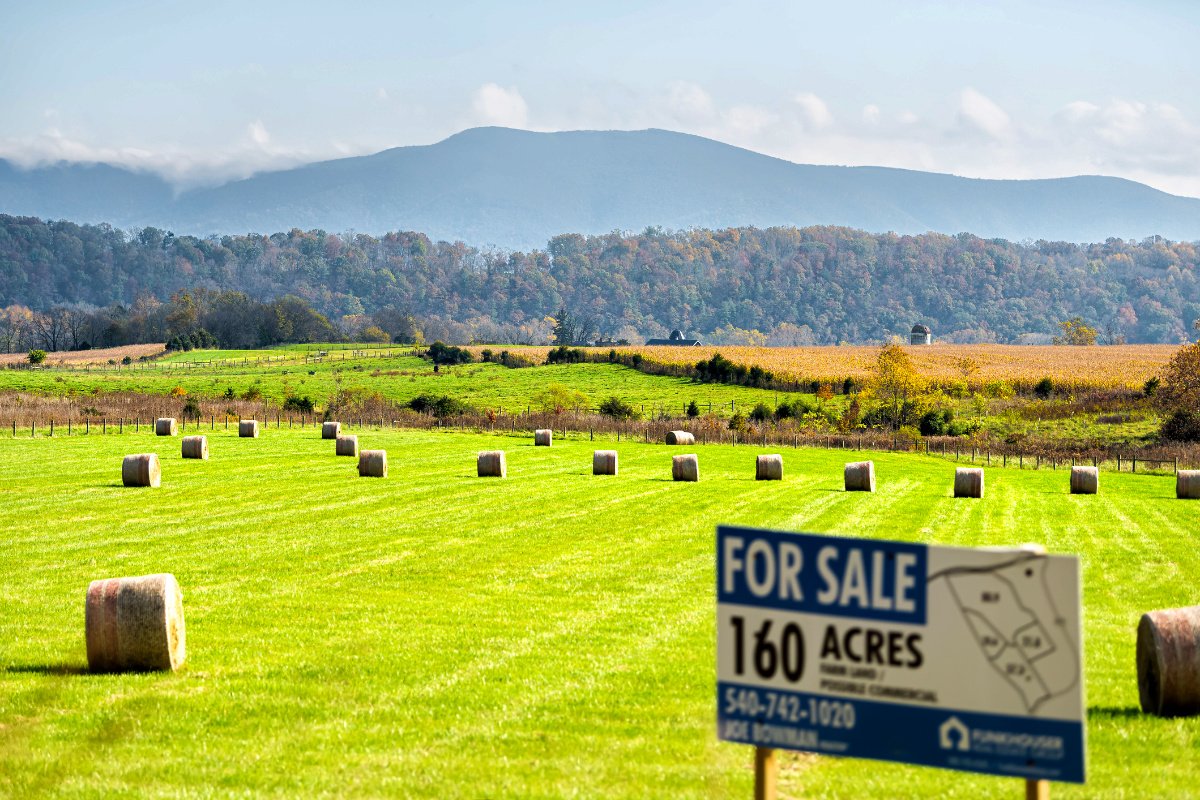A new analysis pins one-third of global greenhouse gases on the food system by including long-overlooked factors such as transportation, packaging, and waste.

A new analysis pins one-third of global greenhouse gases on the food system by including long-overlooked factors such as transportation, packaging, and waste.
June 30, 2021

As drought, heatwaves, and hurricanes ramp up for the summer, and the United Nations’ Food Systems Summit draws near, a group of scientists and policy experts hope to send a clear message about just how big a role food plays in warming the planet.
For nearly three decades, nations have reported greenhouse gas emissions inventories to the U.N. Framework Convention on Climate Change (UNFCCC), an international treaty aimed at stabilizing the climate. The idea is that by tracking emissions across sectors, the inventories reveal where climate action is most urgently needed. The food system encompasses much more than agriculture, and yet under the reporting guidelines set by the Intergovernmental Panel on Climate Change (IPCC), many other factors—such as packaging, transportation, disposal, and agriculture-driven deforestation—haven’t been tallied together. And for that reason, the food system’s overall share of emissions has long been underestimated.
A new analysis aims to change that. Experts from the United Nations’ Food and Agriculture Organization (FAO), NASA Goddard Institute for Space Studies, New York University, and Columbia University have developed an accounting system to capture the food system’s overall role in the climate crisis.
Their paper, recently published in Environmental Research Letters, found that the global food system was responsible for 16 billion metric tons of greenhouse gas emissions in 2018, or a third of all global emissions that year. This is a sharp contrast to the more narrowly defined agriculture sector of the IPCC’s categories for greenhouse gas inventories, which accounted for 5.3 billion metric tons in 2018, or just a tenth of the total.
To be clear, this analysis doesn’t add to the total global greenhouse gas emissions. Rather, it simply collects all the food-related emissions in one place in an attempt to accurately illustrate the true size of food’s carbon footprint. And it reinforces a 2020 research paper that found avoiding catastrophic climate change will be impossible without radically cutting emissions from the global food sector.
“The national greenhouse gas inventories, [under] the IPCC guidelines, are breaking up the components of the food emissions, separating them, and burying them in [other] categories,” said Cynthia Rosenzweig, an author on the paper, a climatologist at NASA Goddard Institute for Space Studies, and a pioneer of the study of climate and agriculture.
The IPCC agriculture category only looks at methane and nitrous oxide from crop and livestock production, overlooking carbon dioxide from the wider food supply chain. But the new analysis offers a more “integrated approach across every part of what it takes to get food from the field to the fork and into the trash bin,” said Rosenzweig.
The new analysis accounts for those emissions that the IPCC allocates to non-agricultural categories, including carbon dioxide from pre-production, like manufacturing fertilizer and farm equipment, and post-production emissions, such as food waste disposal, refrigeration, packaging, and transportation. It also includes as food-related emissions the conversion of natural ecosystems to agricultural land, which at nearly 3 billion metrics tons per year are the largest single source of greenhouse gas emissions in their analysis.
“It isn’t simply a question of reducing emissions. It’s also a question of supporting a sound food system,” said Philippe Benoit, an author on the paper and adjunct senior research scholar at the Center on Global Energy Policy at Columbia University. “It’s recognizing that our food is critical to so much of our quality of life and other issues.”
The hope is that this paradigm shift can lead to more nuanced policy approaches across the food system, as the researchers have underscored in an accompanying policy paper. Take transportation emissions: If looked at solely under the IPCC’s energy category, it may lead to broad policies like the adoption of electric vehicles, which is an important step. Yet if transportation was considered part of an integrated food system, Benoit said it could lead to different approaches as to how and where food is produced to reduce transportation demands.
FAO’s statistics division is currently developing a dataset for each country, calculating food-system emissions with this new accounting approach. The tentative release date is in August, just ahead of the U.N. Food Systems Summit. Rosenzweig hopes this will inform what’s known as the Nationally Determined Contributions (NDCs), which are the mitigation strategies each country creates to honor the Paris Agreement’s threshold of a 2°C (3.6°F) warming above pre-industrial levels, curbing the worst consequences of climate change. Currently, very few NDCs include strategies for addressing the food system.
“When [countries are] planning how to create their Nationally Determined Contributions, they can look at their own food system and really see what is right for them in regards to policies, practices, and processes to reduce greenhouse gas emissions,” said Rosenzweig. “That’s really why we feel that it’s important to do this.”
While the analysis draws attention to the limitations to the IPCC’s categories, it’s not intended to replace this foundational system. “We’re not trying to advocate for the need to use one accounting system over another,” said Francesco Tubiello, the lead author of the paper and a senior statistician at FAO. Like Rosenzweig, he sees this analysis and the forthcoming database as a complement to the IPCC’s reporting system. “Countries that are truly interested in developing strategy that goes across their food systems can better quantify those emissions and identify hotspots, region by region, and by development status,” said Tubiello.
Word choice has played a key role in the way food and agriculture emissions data has essentially been buried in other categories. For instance, emissions from the conversion of forested land, the drainage of organic soils, and peat fires are counted under the category of “Land Use, Land Use Change, and Forestry” (LULUCF), obscuring the major role of agriculture in destroying and degrading natural ecosystems.
“Those emissions get shoved under LULUCF, even when the largest driver is agriculture,” said Tubiello. If greenhouse gases from land use and changes were included in the “agriculture” category, the analysis found that emissions within that category would be nearly doubled, he points out.
Because forests can act as carbon sinks, they are also used to offset the emissions produced from agriculture-driven conversion and degradation of natural ecosystems in the LULUCF category. This fact can obscure the overall picture. Similarly, the agriculture sector is part of the broader category, known as Agriculture, Forestry, and Other Land Use, consisting of LULUCF and agriculture. When lumped together, agriculture’s role can be diminished. In 2019, the IPCC released a Special Report on Climate Change and Land, and compiled those emissions for the global food system for the first time in the panel’s history, but it didn’t affect the guidelines for how emissions are reported to the UNFCCC.
“If you put agriculture in with a bucket with forestry and other land uses, then the sink from all the forested land counteracts the emissions from agriculture,” said Kevin Karl, an author on the paper and research associate at the Center on Global Energy Policy at Columbia University. “It just tells a very different story.”
The IPCC’s accounting system for agriculture similarly overlooks the use of fossil fuels in the food system, from hauling food across the country to manufacturing fertilizer and farm equipment. “I am a firm believer that we need to cut—at least at the same time [as other mitigation strategies], if not first and foremost—most of the CO2 from fossil fuels,” said Tubiello. “So, part of the rationale for the work that we’re doing now is characterizing the magnitude [of greenhouse gas emissions] along the supply chain.”
The new analysis also includes emissions from food waste disposal, which are currently accounted for under the IPCC’s waste sector. This includes greenhouse gases released from the decomposition of food in landfills, incineration, and wastewater treatment— often neglected areas of policy. As the accompanying paper notes, “Most countries have yet to include policies for reducing food waste as a mitigation measure in their Nationally Determined Contributions (NDCs) under the Paris Agreement.”
There are a few areas still overlooked in the new system. For one, the analysis does not take into account the role of varying farming practices, such as improving soil health, in reducing carbon emissions. Karl noted that there is not enough data on this, especially in developing countries. The role of international shipping, trade, and demand is not examined under the new analysis either. This overlooks, for instance, how highly industrialized countries’ demand for certain agricultural commodities can drive emissions in the global South.
“One country’s demand for chocolate might not show in that country’s emissions accounting. It’ll show up in the countries where the cacao is produced,” said Karl. “That’s something that we want to start to bring into our analysis more broadly, but it does present a lot of challenges in terms of accounting in this kind of international framework.”
Tek Sapkota, a climate change scientist at the International Maize and Wheat Improvement Center in Mexico, sees the new analysis as critical to identifying where to cut emissions.
Sapkota, who was not involved in the new paper, describes the new research as an important step toward a more complete understanding of the emissions behind the food on our plates. “This fills the data gap in terms of emissions associated with the whole food system,” he said.

October 9, 2024
In this week’s Field Report, MAHA lands on Capitol Hill, climate-friendly farm funding, and more.
October 2, 2024

October 2, 2024

October 1, 2024

September 24, 2024

September 18, 2024

We have known for at least a decade, that sequestration beyond labile makes a huge difference to infiltration, aeration, pasture and crop nutrient density, lessens demand for synthetic fertiliser, reduces need for toxic sprays, increases Microbiome action not just in soil, but consumers as well.
Yet Science is very slow to acknowledge, trial or advocate these positives, which looks suspiciously like because of loss of sales , research funding etc.